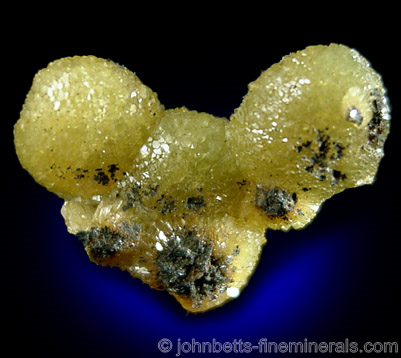The Mineral paradamite

Paradamite is a rare polymorph of the more common Adamite. It is chemically the same mineral type as Adamite, but being that it crystallizes in a different crystal system, it is scientifically recognized as an individual mineral type. It is generally very hard to distinguish from regular Adamite by looks alone. Paradamite crystals are almost always embedded in rusting, crumbly, brown Limonite that stains the hands.
Chemical Formula
Zn2(AsO4)(OH)
Color
Pale to dark yellow
Crystal Habits
As tabular and often rounded crystals, usually small in size and in crystal groupings.
Noteworthy Localities
Paradamite is a very rare mineral with few localities. Its main occurrence is the prolific Adamite locality of Mapimi, Durango, Mexico. Two other localities are Tsumeb, Namibia; and Lavrion, Greece.
Distingushing Similar Minerals
Olivenite - Usually has a greener color and usually occurs in tall, thin crystals.
Smithsonite - Usually occurs finely globular, and doesn't fluoresce.
Adamite - Different crystal form.